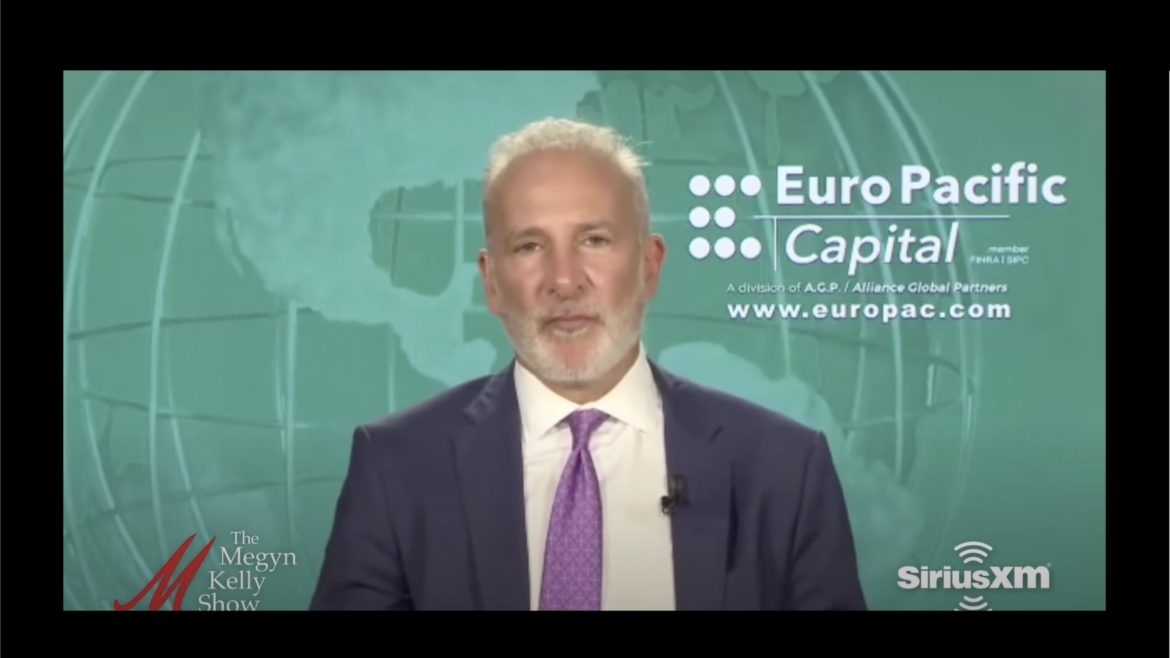Gold has all the potential to go unprecedentedly high. But silver will be gold on
Site:
Precious metals news
Apr 18, 2022 - 06:17:23 PDT
The twin perils of slowing growth and high inflation, or stagflation, will hit the global economy this year as Russia’s war against Ukraine exacerbates a slowdown in the recovery from the coronavirus pandemic, according to Financial Times research.
Apr 18, 2022 - 06:09:14 PDT
As inflation crushes the middle class and low wage workers, we see that the REAL Fed Funds Target Rate (based on headline inflation) is the lowest in history. Notice that the REAL Fed Funds Target Rate tends to hit its lowest negative reading DURING recessions, although The Fed has had a poor track record since the Dot.com bubble burst and the 2001 recession ...
Apr 18, 2022 - 06:06:37 PDT
Mortgage originations by credit scores of 620 or less have shriveled while home price growth YoY is even higher than the subprime mortgage crisis of 2005-2007. So, is the US facing another “Big Short” scenario? Yes and no.
Apr 18, 2022 - 06:03:09 PDT
Notice that prior to Covid, The Fed began rising raising its target rate as capacity utilization was increasing towards 80%. But once The Fed Funds Target rate (upper bound) hit 2.50%, capacity utilization started to cool off. Then Covid stuck.
Of course, this has resulted in soaring PROPERTY TAXES as well. According to Attom Data Services, “Among 1,481 U.S. counties with at least 10,000 single-family homes in 2021, 16 had an average single-family-home tax of more than $10,000, including 12 in the New York City metro area.
The latest consumer price index brought a collective sigh across Wall Street this week. Inflation has peaked, sang many economists, strategists, and headlines. But the logic behind the optimism is flawed.
Bank of Japan Governor Haruhiko Kuroda said on Monday the yen's recent moves had been "quite sharp" and could hurt companies' business plans, offering his strongest warning to date of the risks stemming from the currency's depreciation.
A growing list of risks is turning China into a potential quagmire for global investors.
The positive effects from inflation on earnings growth for U.S. firms have peaked as rising costs trim their margins and price pressures caused by the Ukraine war hit consumers, according to Morgan Stanley strategists.
Long-maturity Treasuries are contending with their biggest drawdown on record, at least according to their most popular exchange-traded fund.
The pattern across markets suggests investors remain uncertain whether high inflation has peaked or not. Price pressures are being fanned by supply-chain snarls from China’s Covid restrictions and disruptions to commodity flows due to the war. Concern is growing that the U.S. economy faces a downturn as the Fed pivots toward aggressive policy tightening to contain the cost of living.
If the Fed is fighting inflation and has ended quantitative easing, why is its balance sheet still going up?In the week ending April 13, the balance sheet grew by $27.9 billion, hitting a new record of $8.965 trillion. This is up about $3 billion from its previous high in March.
While the Top Gold Miners' Cost reached a new high last year, 2022 will be a doozy for the industry as energy prices and materials have skyrocketed. The days of producing gold for $750-$1,250 an ounce are gone for good. I am talking about the "Total Costs," not the All-In Sustaining Cost...
The Consumer Price Index hit 8.5% on an annualized basis in March, the highest level since 1981. In an attempt to get ahead of what everybody knew would be bad news, the Biden administration started blaming Russia for the big CPI before the data even came out. White House press secretary Jen Psaki said, “We expect March CPI headline inflation to be extraordinarily elevated due to Putin’s price hike.” That mainstream media quickly picked up that mantra. Peter Schiff appeared on the Megyn Kelly show and explained why this is a false narrative.
 METALS & MARKET UPDATE APR 17th: U.S. Natgas Prices Surging As Energy Cliff Reaches America
METALS & MARKET UPDATE APR 17th: U.S. Natgas Prices Surging As Energy Cliff Reaches AmericaApril 17, 2022
After more than a half-year of skyrocketing natural gas prices in Europe, it has finally made its way into the heartland of America. While Europeans were struggling with paying four times more for natural gas, U.S. Citizens were enjoying the lowest prices in the world. But, that has all changed now...
 How Many Rate Hikes Until The Market Breaks? Will The Fed Then Have To Pivot?
How Many Rate Hikes Until The Market Breaks? Will The Fed Then Have To Pivot?Apr 16, 2022 - 09:34:18 PDT
Lance Roberts of RIA Advisors joins Adam Taggart to summarize the notable developments in the financial markets over the past week. This week Lance & Adam discuss whether the Fed has much runway or not to hike interest rates much further.
Michael Pento returns in Part 2 of our interview with him to share how his portfolio is currently positioned today and how he plans to amend it when the bear market arrives in earnest.
We got the CPI data for March this week. As expected, prices spiked significantly again last month. A lot of people in the mainstream are calling it "Putin's price hike." Friday Gold Wrap host Mike Maharrey says it would be more appropriate to call it Powell's price hike. In this episode of the podcast, he digs into the CPI data and explains why the blame for high prices is largely misplaced and inflation probably hasn't peaked.
Money manager Michael Pento returns to our program with a big warning -- the prediction he made last year is coming true: He forecasted that, beginning in Q2 2022, we will start hurdling towards a recession as well as one heck of a bear market correction.
 Gold Posts Consecutive Weekly Gain As Ukraine, Inflation Boost Safe-Haven Bids
Gold Posts Consecutive Weekly Gain As Ukraine, Inflation Boost Safe-Haven BidsApr 14, 2022 - 13:13:40 PDT
“Political risk premium through the Ukraine war escalation is building again, which pushed all prices higher in general commodities and that’s really creating that inflation environment,” said Stephen Innes, managing partner at SPI Asset Management.




















